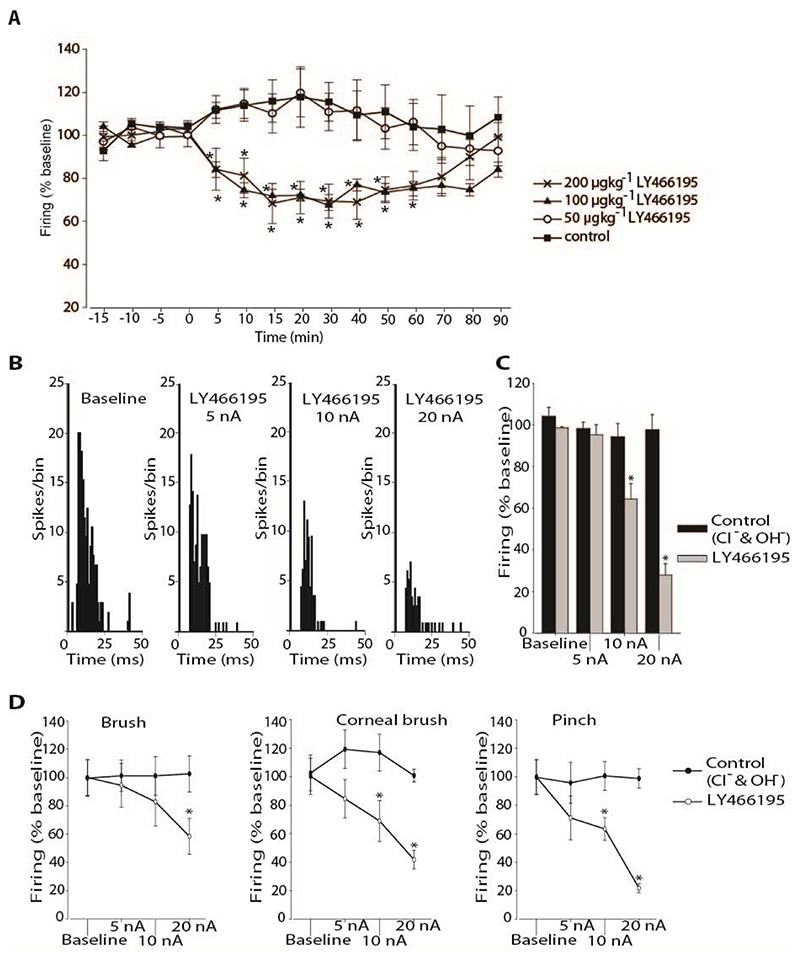Figure 2.
A. Effect of intravenously administrated LY466195 on responses of trigeminocervical neurons to middle meningeal artery stimulation. LY466195 inhibited firing to dural electrical stimulation at 200 and 100 μgkg-1, but not at 50 μgkg-1. Saline control ejection had no effect on neuronal firing. * P < 0.05 B. Effect of microiontophoresis of LY466195 on responses of trigeminocervical neurons to middle meningeal artery stimulation and to receptive field characterisation. Example of post-stimulus histograms from a representative neuron, recorded during baseline conditions and during ejection of LY466195 at currents 5, 10 and 20 nA. C. Comparison of the middle meningeal artery stimulation evoked firing under each condition. Ejection of LY466195 demonstrated a dose dependent inhibition of the cell firing, maximally at 20 nA. D. Effects of microiontophoretically delivered LY466195 and its vehicle control (Cl-, OH-) on the firing rates of second order neurons in response to receptive field characterisation. Microiontophoretic application of LY466195 at 20 nA significantly inhibited firing to both innocuous (brush) and nocuous (corneal brush; pinch) stimulation of the ophthalmic dermatome, while a lower ejection current (10 nA) significantly inhibited noxious stimulation of the receptive field. * P < 0.05

